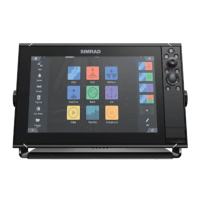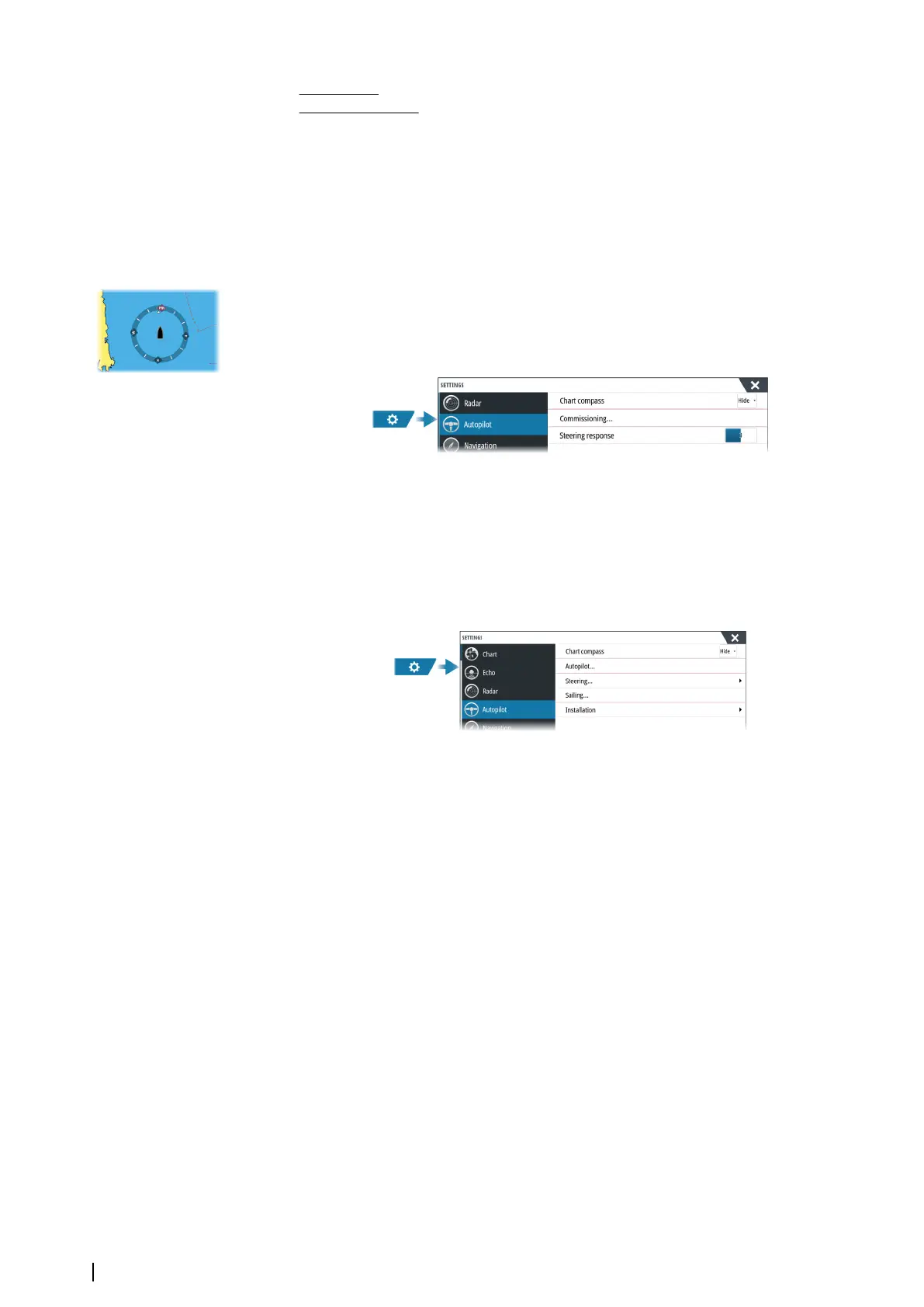• User settings can be changed for various operational conditions or user preferences.
• Installation settings are defined during commissioning of the autopilot system. No
changes should later be done to these settings.
The following sections describe the user settings per autopilot computer. For installation
settings, refer to the installation manual.
Common user settings
The following user settings are common to all autopilots.
Chart compass
Select to display a compass symbol around your boat on the chart panel. The compass
symbol is off when the cursor is active on the panel.
NAC-1 specific user settings
Steering response
Used to increase or decrease the steering sensitivity. A low response level reduces the rudder
activity and provides a looser steering. A high response level increases the rudder activity and
provides tighter steering. A too high response level will cause the boat to make S
movements.
NAC-2/NAC-3 specific user settings
Autopilot
Switches the view to the last active page.
Steering
These options allow for manually changing low speed and high speed parameters that were
set during the commissioning of the autopilot computer. For more details, refer to the
separate documentation for the autopilot computer.
Selecting the low speed option or the high speed option opens dialogs the following
parameters can be changed.
• Turn rate: Preferred turn rate used while turning in degrees per minute.
• Rudder gain: This parameter determines the ratio between commanded rudder and the
heading error. The higher rudder value the more rudder is applied. If the value is too small
it will take a long time to compensate for a heading error, and the autopilot will fail to
keep a steady course. If the value is set too high the overshoot will increase and the
steering will be unstable.
• Counter rudder: Relation between change in heading error and applied rudder. Higher
counter rudder will reduce applied rudder faster when approaching the set heading.
• Auto trim: Controls how aggressively the autopilot will apply rudder to compensate for a
constant heading offset, e.g. when external forces such as wind or current affects the
heading. Lower auto trim will give faster, limitation of a constant heading offset.
Ú
Note: In VRF mode this parameter controls the time constant of the rudder estimate. A
lower value makes the rudder estimate faster, i.e. that it will more quickly catch up with
the boat's movements.
104
Autopilot| NSS evo3S Operator Manual

